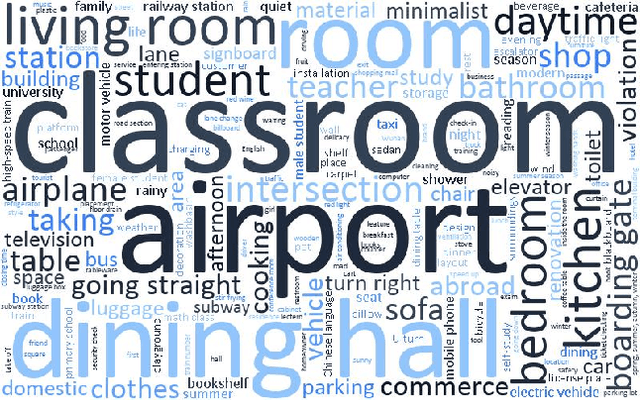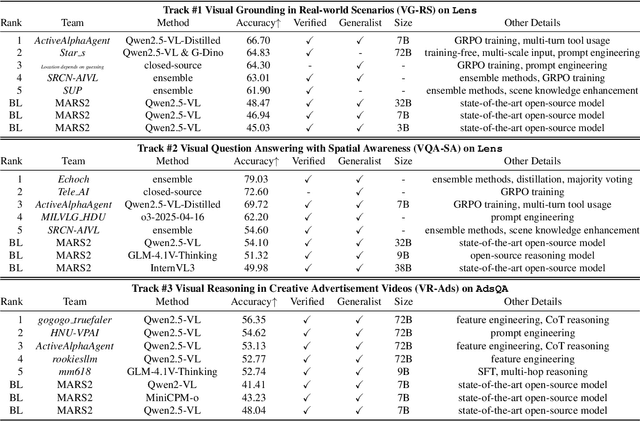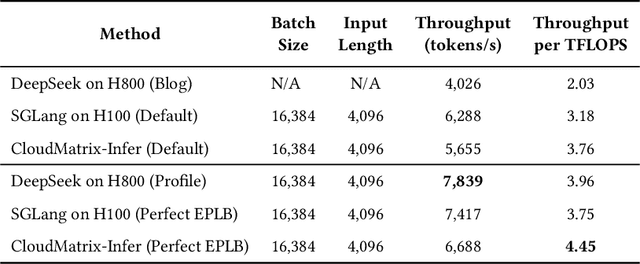Zhou Yu
University of California, Davis
Dyna-Mind: Learning to Simulate from Experience for Better AI Agents
Oct 10, 2025



Abstract:Reasoning models have recently shown remarkable progress in domains such as math and coding. However, their expert-level abilities in math and coding contrast sharply with their performance in long-horizon, interactive tasks such as web navigation and computer/phone-use. Inspired by literature on human cognition, we argue that current AI agents need ''vicarious trial and error'' - the capacity to mentally simulate alternative futures before acting - in order to enhance their understanding and performance in complex interactive environments. We introduce Dyna-Mind, a two-stage training framework that explicitly teaches (V)LM agents to integrate such simulation into their reasoning. In stage 1, we introduce Reasoning with Simulations (ReSim), which trains the agent to generate structured reasoning traces from expanded search trees built from real experience gathered through environment interactions. ReSim thus grounds the agent's reasoning in faithful world dynamics and equips it with the ability to anticipate future states in its reasoning. In stage 2, we propose Dyna-GRPO, an online reinforcement learning method to further strengthen the agent's simulation and decision-making ability by using both outcome rewards and intermediate states as feedback from real rollouts. Experiments on two synthetic benchmarks (Sokoban and ALFWorld) and one realistic benchmark (AndroidWorld) demonstrate that (1) ReSim effectively infuses simulation ability into AI agents, and (2) Dyna-GRPO leverages outcome and interaction-level signals to learn better policies for long-horizon, planning-intensive tasks. Together, these results highlight the central role of simulation in enabling AI agents to reason, plan, and act more effectively in the ever more challenging environments.
Proactive defense against LLM Jailbreak
Oct 06, 2025Abstract:The proliferation of powerful large language models (LLMs) has necessitated robust safety alignment, yet these models remain vulnerable to evolving adversarial attacks, including multi-turn jailbreaks that iteratively search for successful queries. Current defenses, primarily reactive and static, often fail to counter these search-based attacks. In this paper, we introduce ProAct, a novel proactive defense framework designed to disrupt and mislead autonomous jailbreaking processes. Our core idea is to intentionally provide adversaries with "spurious responses" that appear to be results of successful jailbreak attacks but contain no actual harmful content. These misleading responses provide false signals to the attacker's internal optimization loop, causing the adversarial search to terminate prematurely and effectively jailbreaking the jailbreak. By conducting extensive experiments across state-of-the-art LLMs, jailbreaking frameworks, and safety benchmarks, our method consistently and significantly reduces attack success rates by up to 92\%. When combined with other defense frameworks, it further reduces the success rate of the latest attack strategies to 0\%. ProAct represents an orthogonal defense strategy that can serve as an additional guardrail to enhance LLM safety against the most effective jailbreaking attacks.
Generation Properties of Stochastic Interpolation under Finite Training Set
Sep 26, 2025Abstract:This paper investigates the theoretical behavior of generative models under finite training populations. Within the stochastic interpolation generative framework, we derive closed-form expressions for the optimal velocity field and score function when only a finite number of training samples are available. We demonstrate that, under some regularity conditions, the deterministic generative process exactly recovers the training samples, while the stochastic generative process manifests as training samples with added Gaussian noise. Beyond the idealized setting, we consider model estimation errors and introduce formal definitions of underfitting and overfitting specific to generative models. Our theoretical analysis reveals that, in the presence of estimation errors, the stochastic generation process effectively produces convex combinations of training samples corrupted by a mixture of uniform and Gaussian noise. Experiments on generation tasks and downstream tasks such as classification support our theory.
DF-LLaVA: Unlocking MLLM's potential for Synthetic Image Detection via Prompt-Guided Knowledge Injection
Sep 18, 2025Abstract:With the increasing prevalence of synthetic images, evaluating image authenticity and locating forgeries accurately while maintaining human interpretability remains a challenging task. Existing detection models primarily focus on simple authenticity classification, ultimately providing only a forgery probability or binary judgment, which offers limited explanatory insights into image authenticity. Moreover, while MLLM-based detection methods can provide more interpretable results, they still lag behind expert models in terms of pure authenticity classification accuracy. To address this, we propose DF-LLaVA, a simple yet effective framework that unlocks the intrinsic discrimination potential of MLLMs. Our approach first extracts latent knowledge from MLLMs and then injects it into training via prompts. This framework allows LLaVA to achieve outstanding detection accuracy exceeding expert models while still maintaining the interpretability offered by MLLMs. Extensive experiments confirm the superiority of our DF-LLaVA, achieving both high accuracy and explainability in synthetic image detection. Code is available online at: https://github.com/Eliot-Shen/DF-LLaVA.
MARS2 2025 Challenge on Multimodal Reasoning: Datasets, Methods, Results, Discussion, and Outlook
Sep 17, 2025



Abstract:This paper reviews the MARS2 2025 Challenge on Multimodal Reasoning. We aim to bring together different approaches in multimodal machine learning and LLMs via a large benchmark. We hope it better allows researchers to follow the state-of-the-art in this very dynamic area. Meanwhile, a growing number of testbeds have boosted the evolution of general-purpose large language models. Thus, this year's MARS2 focuses on real-world and specialized scenarios to broaden the multimodal reasoning applications of MLLMs. Our organizing team released two tailored datasets Lens and AdsQA as test sets, which support general reasoning in 12 daily scenarios and domain-specific reasoning in advertisement videos, respectively. We evaluated 40+ baselines that include both generalist MLLMs and task-specific models, and opened up three competition tracks, i.e., Visual Grounding in Real-world Scenarios (VG-RS), Visual Question Answering with Spatial Awareness (VQA-SA), and Visual Reasoning in Creative Advertisement Videos (VR-Ads). Finally, 76 teams from the renowned academic and industrial institutions have registered and 40+ valid submissions (out of 1200+) have been included in our ranking lists. Our datasets, code sets (40+ baselines and 15+ participants' methods), and rankings are publicly available on the MARS2 workshop website and our GitHub organization page https://github.com/mars2workshop/, where our updates and announcements of upcoming events will be continuously provided.
DoubleAgents: Exploring Mechanisms of Building Trust with Proactive AI
Sep 16, 2025Abstract:Agentic workflows promise efficiency, but adoption hinges on whether people actually trust systems that act on their behalf. We present DoubleAgents, an agentic planning tool that embeds transparency and control through user intervention, value-reflecting policies, rich state visualizations, and uncertainty flagging for human coordination tasks. A built-in respondent simulation generates realistic scenarios, allowing users to rehearse, refine policies, and calibrate their reliance before live use. We evaluate DoubleAgents in a two-day lab study (n=10), two deployments (n=2), and a technical evaluation. Results show that participants initially hesitated to delegate but grew more reliant as they experienced transparency, control, and adaptive learning during simulated cases. Deployment results demonstrate DoubleAgents' real-world relevance and usefulness, showing that the effort required scaled appropriately with task complexity and contextual data. We contribute trust-by-design patterns and mechanisms for proactive AI -- consistency, controllability, and explainability -- along with simulation as a safe path to build and calibrate trust over time.
AI Agents for Web Testing: A Case Study in the Wild
Sep 05, 2025Abstract:Automated web testing plays a critical role in ensuring high-quality user experiences and delivering business value. Traditional approaches primarily focus on code coverage and load testing, but often fall short of capturing complex user behaviors, leaving many usability issues undetected. The emergence of large language models (LLM) and AI agents opens new possibilities for web testing by enabling human-like interaction with websites and a general awareness of common usability problems. In this work, we present WebProber, a prototype AI agent-based web testing framework. Given a URL, WebProber autonomously explores the website, simulating real user interactions, identifying bugs and usability issues, and producing a human-readable report. We evaluate WebProber through a case study of 120 academic personal websites, where it uncovered 29 usability issues--many of which were missed by traditional tools. Our findings highlight agent-based testing as a promising direction while outlining directions for developing next-generation, user-centered testing frameworks.
Beyond Correctness: Harmonizing Process and Outcome Rewards through RL Training
Sep 03, 2025Abstract:Reinforcement learning with verifiable rewards (RLVR) has emerged to be a predominant paradigm for mathematical reasoning tasks, offering stable improvements in reasoning ability. However, Outcome Reward Models (ORMs) in RLVR are too coarse-grained to distinguish flawed reasoning within correct answers or valid reasoning within incorrect answers. This lack of granularity introduces noisy and misleading gradients significantly and hinders further progress in reasoning process quality. While Process Reward Models (PRMs) offer fine-grained guidance for intermediate steps, they frequently suffer from inaccuracies and are susceptible to reward hacking. To resolve this dilemma, we introduce PRocess cOnsistency Filter (PROF), an effective data process curation method that harmonizes noisy, fine-grained process rewards with accurate, coarse-grained outcome rewards. Rather than naively blending PRM and ORM in the objective function (arXiv:archive/2506.18896), PROF leverages their complementary strengths through consistency-driven sample selection. Our approach retains correct responses with higher averaged process values and incorrect responses with lower averaged process values, while maintaining positive/negative training sample balance. Extensive experiments demonstrate that our method not only consistently improves the final accuracy over $4\%$ compared to the blending approaches, but also strengthens the quality of intermediate reasoning steps. Codes and training recipes are available at https://github.com/Chenluye99/PROF.
Serving Large Language Models on Huawei CloudMatrix384
Jun 15, 2025



Abstract:The rapid evolution of large language models (LLMs), driven by growing parameter scales, adoption of mixture-of-experts (MoE) architectures, and expanding context lengths, imposes unprecedented demands on AI infrastructure. Traditional AI clusters face limitations in compute intensity, memory bandwidth, inter-chip communication, and latency, compounded by variable workloads and strict service-level objectives. Addressing these issues requires fundamentally redesigned hardware-software integration. This paper introduces Huawei CloudMatrix, a next-generation AI datacenter architecture, realized in the production-grade CloudMatrix384 supernode. It integrates 384 Ascend 910C NPUs and 192 Kunpeng CPUs interconnected via an ultra-high-bandwidth Unified Bus (UB) network, enabling direct all-to-all communication and dynamic pooling of resources. These features optimize performance for communication-intensive operations, such as large-scale MoE expert parallelism and distributed key-value cache access. To fully leverage CloudMatrix384, we propose CloudMatrix-Infer, an advanced LLM serving solution incorporating three core innovations: a peer-to-peer serving architecture that independently scales prefill, decode, and caching; a large-scale expert parallelism strategy supporting EP320 via efficient UB-based token dispatch; and hardware-aware optimizations including specialized operators, microbatch-based pipelining, and INT8 quantization. Evaluation with the DeepSeek-R1 model shows CloudMatrix-Infer achieves state-of-the-art efficiency: prefill throughput of 6,688 tokens/s per NPU and decode throughput of 1,943 tokens/s per NPU (<50 ms TPOT). It effectively balances throughput and latency, sustaining 538 tokens/s even under stringent 15 ms latency constraints, while INT8 quantization maintains model accuracy across benchmarks.
Not All Tokens Are What You Need In Thinking
May 23, 2025Abstract:Modern reasoning models, such as OpenAI's o1 and DeepSeek-R1, exhibit impressive problem-solving capabilities but suffer from critical inefficiencies: high inference latency, excessive computational resource consumption, and a tendency toward overthinking -- generating verbose chains of thought (CoT) laden with redundant tokens that contribute minimally to the final answer. To address these issues, we propose Conditional Token Selection (CTS), a token-level compression framework with a flexible and variable compression ratio that identifies and preserves only the most essential tokens in CoT. CTS evaluates each token's contribution to deriving correct answers using conditional importance scoring, then trains models on compressed CoT. Extensive experiments demonstrate that CTS effectively compresses long CoT while maintaining strong reasoning performance. Notably, on the GPQA benchmark, Qwen2.5-14B-Instruct trained with CTS achieves a 9.1% accuracy improvement with 13.2% fewer reasoning tokens (13% training token reduction). Further reducing training tokens by 42% incurs only a marginal 5% accuracy drop while yielding a 75.8% reduction in reasoning tokens, highlighting the prevalence of redundancy in existing CoT.
 Add to Chrome
Add to Chrome Add to Firefox
Add to Firefox Add to Edge
Add to Edge